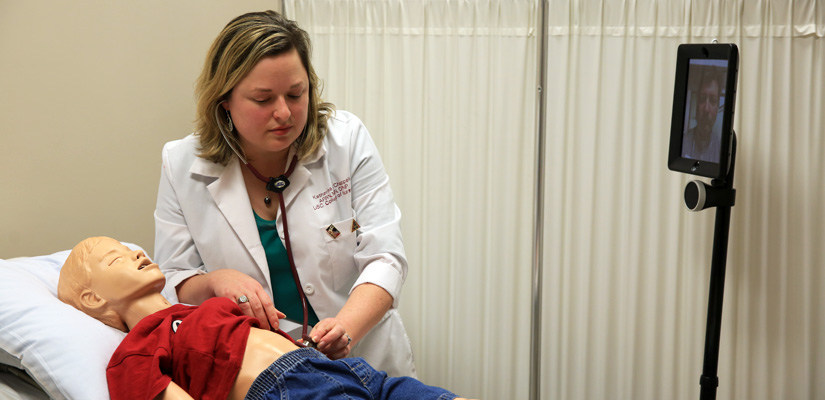At the College of Nursing’s Clinical Simulation Lab, using programmed mannequin and
robot patients to train new nurses is standard procedure.
Nursing students gather around a computerized mannequin’s bed while faculty such as
clinical associate professor Kate Chappell guide them through the proper protocols of patient assessment and interaction; later,
the students demonstrate their own competency by interacting with those same mannequin
patients.
Now, thanks to a pair of new robots designed by California-based Double Robotics, and purchased by the College of Nursing this past November, nursing students can get that same valuable training from anywhere in the world — simply by logging onto a computer or their smartphone, or anything with webcam capabilities, and connecting remotely with the folks in the lab.
“We have students currently who are in Missouri, who are in Virginia; we have one in Germany because her husband is deployed,” says Chappell. “This allows us to offer them practice opportunities as well as potential check-off opportunities for competency, without them having to travel all the way here, in person, for a one- to two-hour activity.”
And as Chappell explains, the robots also offer a portal for professionals in the field to interface with faculty and students in the clinic.
“If we have a situation where undergraduate students are doing a simulation and we want other people to come into that room — for example, a nurse practitioner or a physician — we can essentially wheel that person in and they also become part of the students’ clinical experience.”
For now, the robots are being implemented in just two courses, Advanced Health Assessment for Nurse Practitioner Students and Pediatric Nursing of Children, but Chappell expects them to be further integrated into the curriculum as nursing education evolves and faculty become more comfortable with the technology.
“This gives us just one more tool to reach our students and to help them participate in as many opportunities as we can make available,” she says. “Even if the professor still wants the students here for the live ‘check-off,’ that’s just one time. They can get their other experience virtually.”
